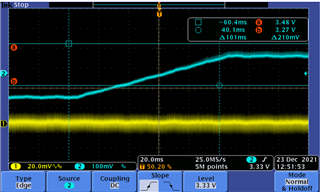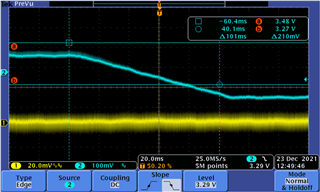Other Parts Discussed in Thread: TPS61033
Hi,
Looking for the minimum and maximum DutyCycle of the TPS631010 in Forced PWM (FPWM) Mode. Or minimum On-Time of the switches.
Couldn't find it in the Datasheet December 2022, did i missed it?
Would like to Boost from 3.2V to 3.6V and having the low noise behavior of the FPWM. Thats 11.1% DutyCycle or 55.5ns On-Time @2MHz for LowSide Switch.
Whats the limit of Forced PWM Mode and what is the behavior of the device when it reaches those. Does it switch to PFM even though pin MODE is set High?
Kind regards



